
In a sweeping move by the Department of Education, schools and universities across the U.S. have been given just 14 days to dismantle all Diversity, Equity, and Inclusion (DEI) programs or risk losing federal funding. The directive, which aligns with the Supreme Court’s ruling against race-based admissions policies, has left many institutions scrambling to comply while facing significant logistical and ideological challenges.
The Challenge of Compliance
For years, DEI principles have been woven into school curricula, faculty training, hiring practices, and administrative structures. Now, schools are faced with an abrupt mandate that requires a fundamental shift in how they approach equity and inclusion. The task is daunting: How does an institution deconstruct something in two weeks that took years to build?
To meet the new requirement, institutions are rapidly:
- Reviewing and Suspending DEI Policies – Schools are assessing which programs, scholarships, and hiring practices could put them at risk.
- Seeking Legal Guidance – Attorneys are being consulted to ensure compliance efforts do not violate state laws or existing commitments.
- Restructuring Administrative Roles – Offices dedicated to DEI may be repurposed, and some staff members could face termination or reassignment.
- Re-evaluating Curriculum and Training – Courses and faculty development programs will likely undergo revisions to eliminate race-conscious decision-making elements.
A Shifting DEI Landscape
While some schools may opt for a direct rollback of DEI programs, others are exploring alternative approaches that maintain inclusivity without explicitly referencing DEI. Potential shifts include:
- Focusing on Socioeconomic Status – Institutions may pivot toward addressing economic disparities rather than race-based disparities.
- Promoting Individualized Support – Schools could shift efforts toward aiding students based on individual needs rather than broad demographic categories.
- Strengthening Anti-Discrimination Policies – Rather than focusing on DEI initiatives, schools may emphasize protections against harassment and bias.
Vermilion Schools and the DEI Debate: A Response from Dr. Hile
The conversation surrounding Diversity, Equity, and Inclusion (DEI) in Ohio’s public schools has become a heated political issue, particularly as the state government pushes for significant changes. In this climate, Vermilion Local Schools finds itself in the middle of this discussion, with Superintendent Dr. David Hile providing his response to recent questions raised by Vermilion Daily.
—————————————————————————————————————————————————–
Email Correspondence
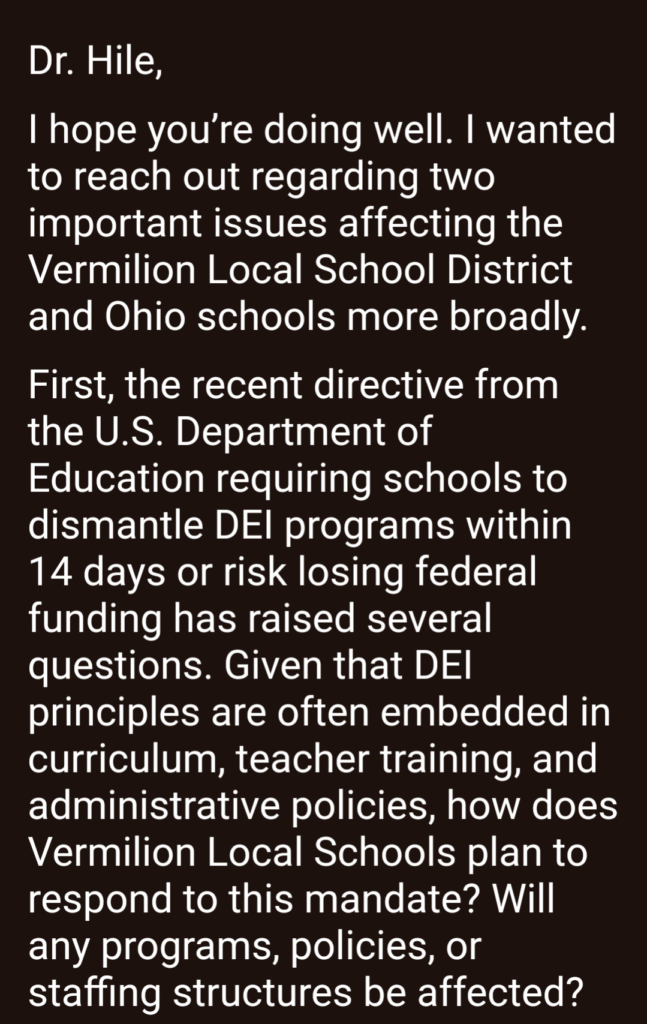
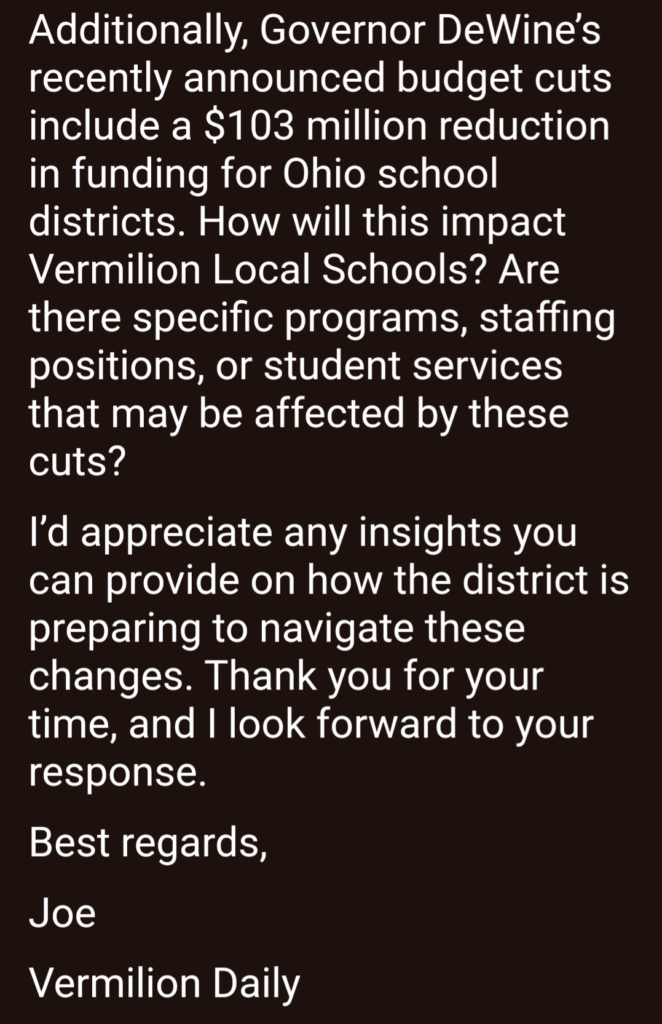
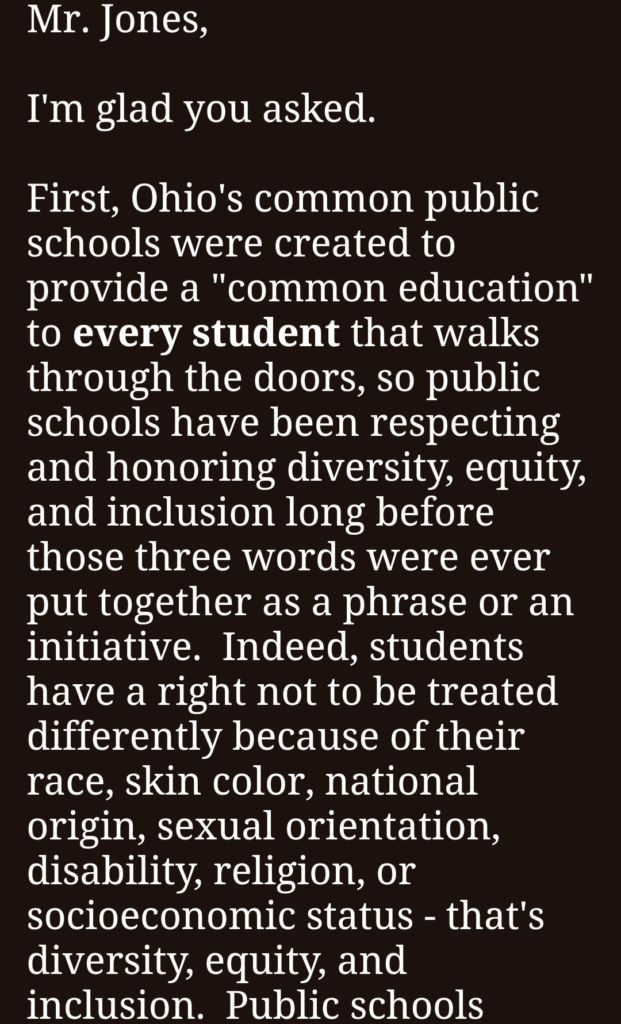

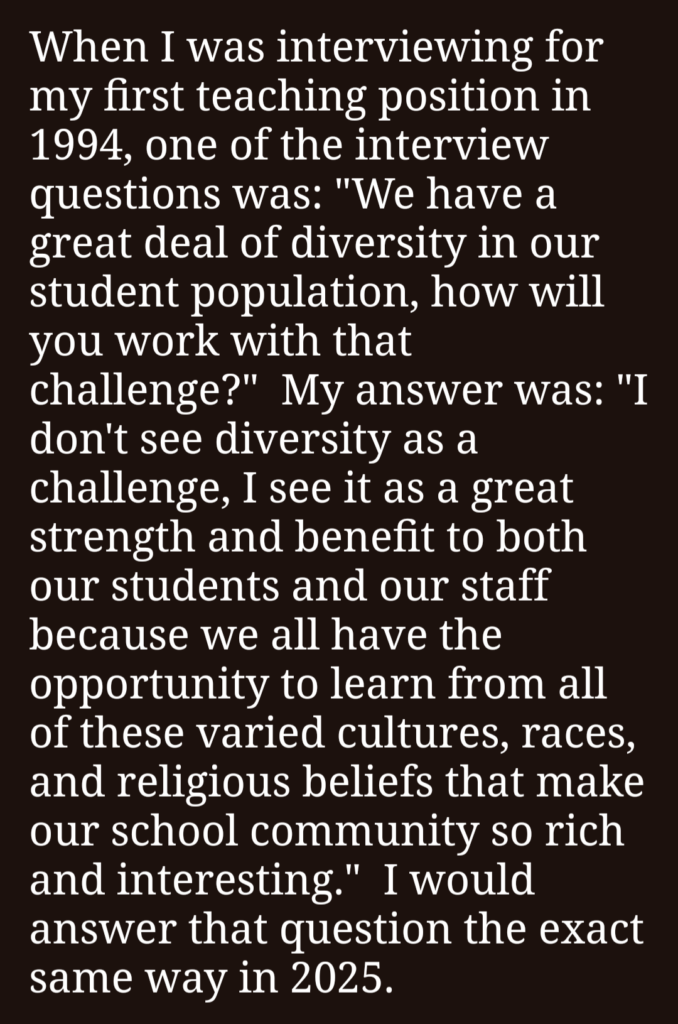
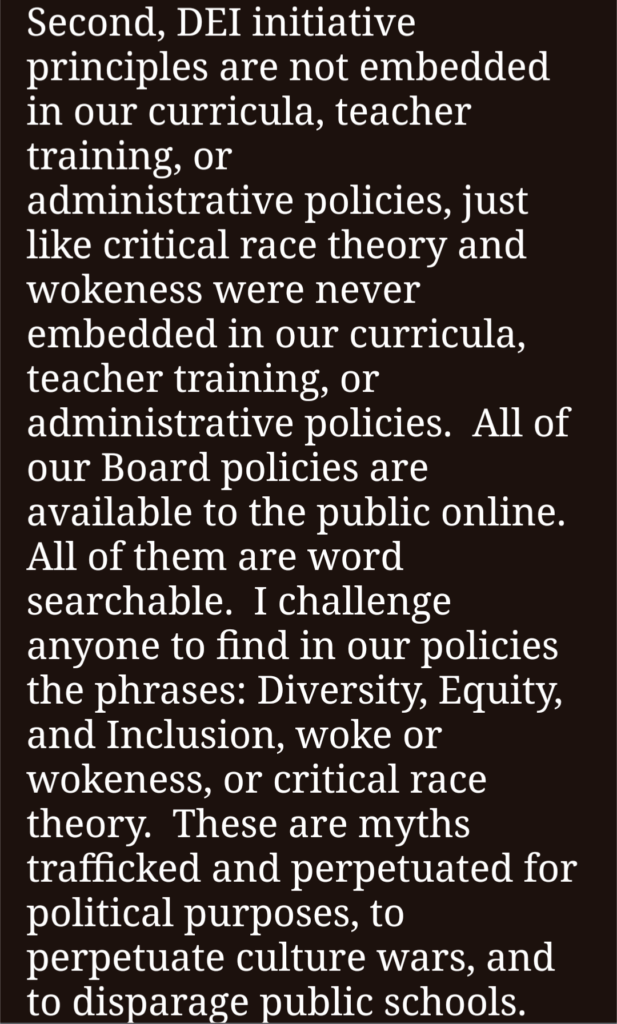





A Disconnect: The Larger Conversation and the Response
While Dr. Hile’s response is undeniably direct, it does seem to miss some key nuances of the conversation surrounding DEI in Ohio’s public schools. His stance emphasizes that DEI is already a core value of the district, and he asserts that there is no formal DEI initiative embedded in the curriculum. However, this response doesn’t fully engage with the specific concerns raised in the initial questions about the challenges schools face in balancing inclusivity with political pressures, nor does it address the direct concerns about the funding crisis facing public education.
For instance, while Dr. Hile defends the district’s approach to diversity, his remarks don’t speak directly to the impact of the ongoing political climate—particularly the push to restrict DEI practices in schools or the state’s defunding of public schools. These issues remain largely unaddressed in his response, which may leave Vermilion residents wondering about the district’s specific strategies moving forward in this increasingly polarized environment.
State Budget Cuts and Their Impact on Vermilion Schools
As Dr. Hile points out, state funding has been increasingly diverted from public schools to private institutions. Governor Mike DeWine’s recent approval of over $100 million in cuts to the Ohio schools budget will only exacerbate this trend, with suburban districts like Vermilion seeing some of the sharpest reductions. These cuts have real consequences: less funding for public schools, fewer resources for students, and an increasing reliance on local taxpayers to fill the gap. This makes it even harder to maintain the kind of inclusive educational environment Dr. Hile describes
Is DEI Truly Core if Not Officially Defined?
Another point of contention arises from Dr. Hile’s assertion that DEI is not formally embedded in the district’s policies, yet remains central to the district’s mission. This raises an important question: How can DEI be considered a core value if it’s not officially recognized in district policies, curricula, or teacher training programs? While public schools may inherently be diverse, some argue that an explicit focus on DEI principles is necessary to ensure these values are consistently upheld across all aspects of education.

Looking Ahead: The Pressing Issues for Vermilion Schools
The debate over DEI in Ohio schools may continue to dominate political rhetoric, but Vermilion Local Schools is faced with more immediate and pressing concerns. With funding cuts, political pressure to curtail DEI initiatives, and an increasingly polarized environment, the district’s ability to serve its students effectively is at risk. It’s essential that the focus remains on addressing these challenges head-on—not just defending the principles of inclusivity, but ensuring that Vermilion’s students have the resources they need to succeed in an ever-changing world. In addition, there’s a levy on the ballot in May to add even more pressure to the overall situation. The stakes have never been higher and right now, every decision matters.


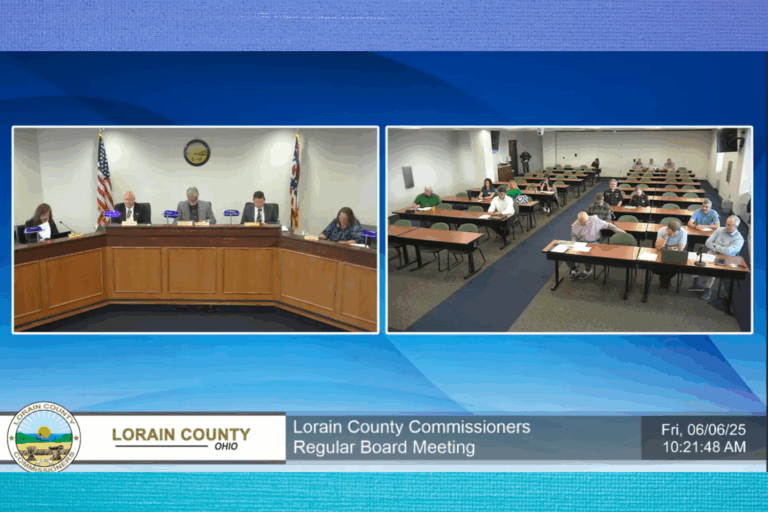
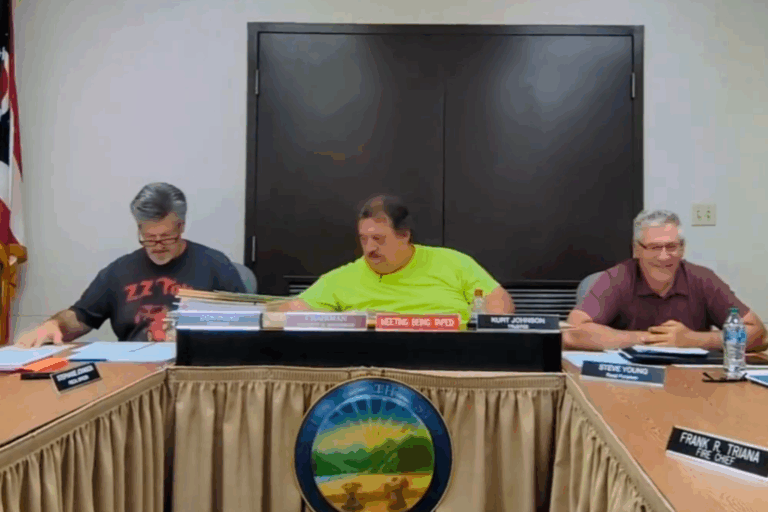


One more reason to vote NO.
And maybe he needs a new school. Most of this area is not woke. Does Not believes men belong in women sports or locker rooms. Equality is not equity a fact he seems to ignore.